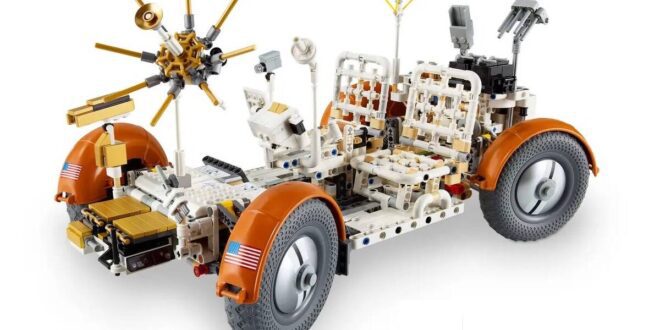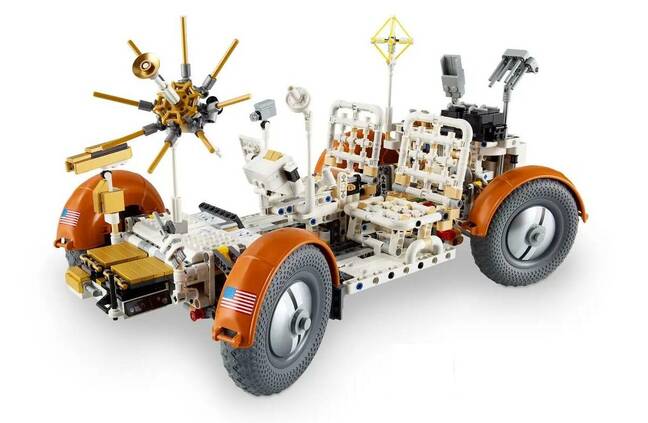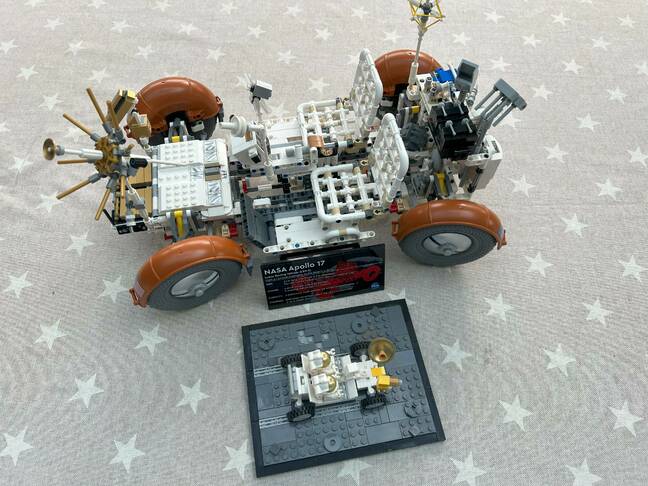The Lego Lunar Roving Vehicle
The original Apollo Lunar Roving Vehicle had the look of something that had been strung together from an oversized Meccano set. It should, therefore, not come as a surprise to find a LEGO variant built from the company’s Technic pieces.
The Register has assembled plenty of space-based Lego sets over the years, including official Apollo-based items from Lego itself to sets designed by enthusiasts. All were a delight to construct, particularly when you stir in some of the accuracy improvements that can be applied to retail sets, or build designs that really should be on retail shelves.
Lego’s Impressive Recreation
The Lunar Roving Vehicle (LRV), in Apollo 17 spec, is the latest in Lego’s line and is a superb effort from the brick maker. With one, glaring, exception. But we’ll get to that later.
The set itself is constructed from Technic pieces, much like the Mars rover. We’d argue that Technic is a much better fit for a recreation of the spindly LRV, and Lego has pulled out all of the stops when it comes to playability.
Just as the actual LRV was a marvel of engineering, so Lego’s recreation is an impressive feat of what can be achieved with Technic.
NASA’s LRV was flown on the Apollo 15, 16, and 17 missions during 1971 and 1972. It was designed to fold up and fit into the lunar module’s descent stage and, powered by battery, could ferry two astronauts, their equipment, and samples around the Moon.
Assembly and Features
There are 1,913 pieces in Lego’s set – split into bags, some made of paper, some of plastic. Assembly was straightforward, and you can expect to spend about eight hours fiddling with Technic.
The LRV itself was completed ahead of its payloads: Lego includes the Lunar Communications Relay Unit (LCRU); the aft pallet assembly – with tools and scientific equipment; and the forward chassis, which sports a recreation of Apollo 17’s color television camera and the high-gain antenna along with batteries.
Notable Detail
However, it is with the high-gain antenna that the wheels come off this set slightly. Despite the attention to detail elsewhere, the high-gain antenna represents the most egregious diversion from what is currently sitting on the Moon.
We asked Lego why it did not create a custom part for the dish, but the company had no comment to make.
Conclusion
Lego’s Lunar Roving Vehicle set is a delight to assemble. Yes, it can be a bit tricky in places – this is Technic, after all – but it is also eminently playable and an eye-opener into just how creative the engineers in the days of Apollo were when it came to maximizing space.
It doesn’t come cheap at £189.99 in the UK or $219.99 in the US, yet it is a worthy addition to Lego’s space series. ®
 Mind Uncharted Explore. Discover. Learn.
Mind Uncharted Explore. Discover. Learn.





